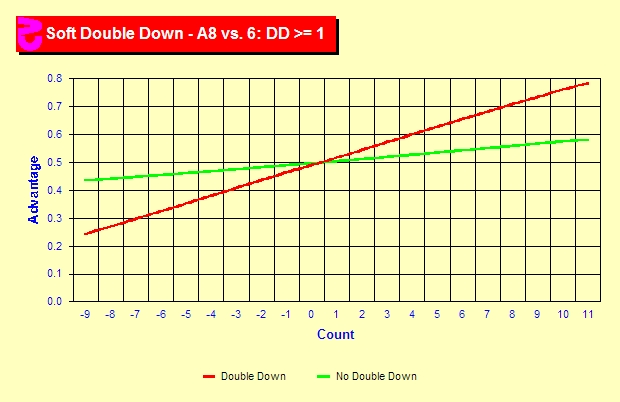Although basic strategy chart show that soft 19 (A,8) should double on dealer 6 for H17, 6-8 deck, my calculation shows that soft 19 (A,8) should double on dealer 6 until TC>=8
odds 19 against 6 is 0.7266 ( winning 22.66%)
odds Hit 19 against 6 is 0.615 ( winning 11.5%)
Since 11.5%*2 =23% slightly more than 22.66%, A,8 should double on dealer 6.



 Reply With Quote
Reply With Quote


Bookmarks